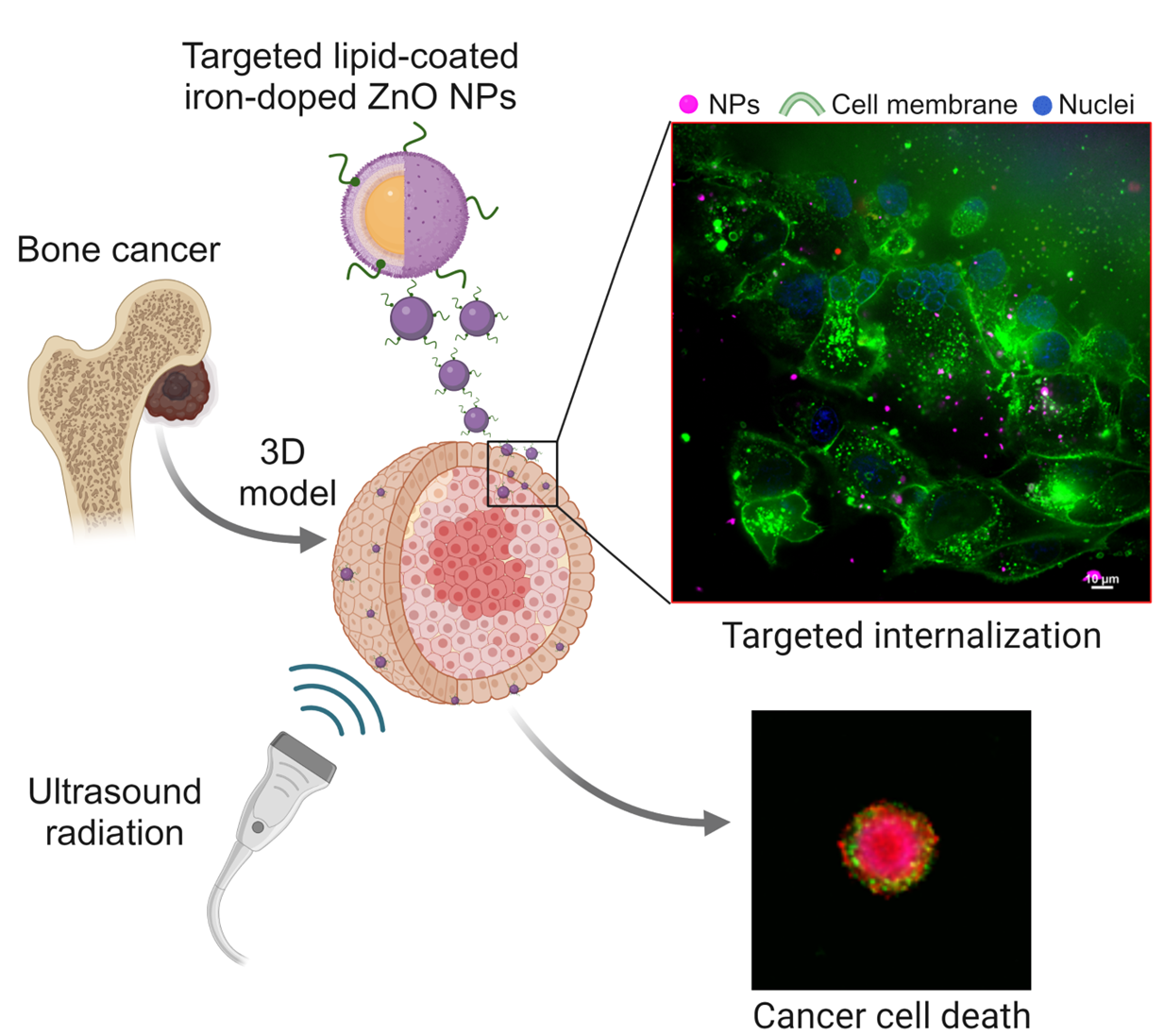Bone cancer is a rare and challenging disease, especially troubling since 3-5% of cases occur in adolescents and children. Treating bone osteosarcoma without invasive techniques and avoiding limb amputation presents a formidable challenge. The tumor’s deep-seated location within the bones often makes it difficult for external treatments to reach the affected area. However, ultrasound-based therapies have shown promise in overcoming these barriers.
In this case study, we unveil the potential of iron-doped ZnO (FZ) nanoparticles (NPs) as powerful sonosensitizing agents for treating bone osteosarcoma using a 3D spheroid model. These FZ NPs have been engineered for biocompatibility through an innovative phospholipid formulation, allowing for the bioconjugation of virtually any targeting moiety. To enhance specificity for osteosarcoma cells, we incorporated a targeting peptide that recognizes the erythropoietin-producing hepatocellular receptor-2 (EphA2), a protein highly overexpressed in these tumors.

Our study introduces a pioneering sonodynamic therapy for bone osteosarcoma, utilizing biocompatible FZ NPs that can be remotely activated by safe ultrasound levels. The uniqueness of our research lies in the use of these cutting-edge biomimetic and targeted NPs, which demonstrate exceptional effectiveness as stimuli-responsive nanomedicines under acoustic pressure. Moreover, our work highlights the enhanced safety provided by the innovative lipidic coating of our metal oxide nanocrystals. This coating optimizes the interactions of these hybrid nanoparticles with recipient cells, even in complex 3D models, ensuring rapid and efficient internalization and intracellular distribution.
In essence, this study not only showcases a novel therapeutic avenue for bone osteosarcoma but also sets the stage for future advancements in targeted nanomedicine.
